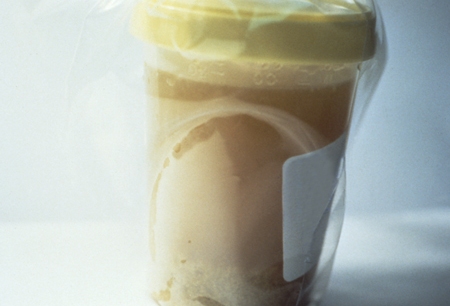Summary
Definition
History and exam
Key diagnostic factors
- copious watery diarrhea
- evidence of volume depletion
Other diagnostic factors
- age <5 years
- ingestion of shellfish
- family history of recent, severe, cholera-like illness
- vomiting
- fever
- abdominal pain
- lethargy or coma
Risk factors
- ingestion of contaminated water
- ingestion of contaminated food
- inadequate sanitation
- recent heavy rains and flooding
- decreased gastric acid secretion
- blood group O
- malnutrition
- HIV infection
- lack of breast-feeding
Diagnostic tests
1st tests to order
- CBC
- serum electrolytes
- serum BUN and creatinine
- serum lactate
- ABG
- ECG
- dark-field/phase-contrast microscopy of stool
- rapid dipstick testing of stool
Tests to consider
- Gram stain of stool
- stool culture of liquid stool, fecal suspension, or rectal swab
- serogroup confirmation using antisera
- antibiogram (sensitivities)
- enzyme-linked immunosorbent assay (ELISA) assay of stool
- molecular testing of stool
- loop-mediated isothermal amplification (LAMP) assay of stool
- CXR and abdominal x-ray
Treatment algorithm
mild-moderate volume depletion: without vomiting
vomiting or severe volume depletion
Contributors
Authors
Marcus Eder, MD (Inf Diseases & Microbiology), MRCP, MRCPath, MSc, DTM&H
Scientific Collaborator
Research & Development
Swissnoso (National Center for Infection Control)
Bern
Switzerland
Disclosures
ME declares that he has no competing interests.
Rekha Lopez, BSc, MBBS, MRCP, MSc, FRCPath
Consultant Microbiologist
Barking, Havering and Redbridge University Hospitals NHS Trust
Essex
UK
Disclosures
RL declares that she has no competing interests.
Acknowledgements
Dr Marcus Eder and Dr Rekha Lopez would like to gratefully acknowledge Dr Justin Green, a previous contributor to this topic.
Disclosures
JG is employed by, and holds stock in, GlaxoSmithKline (GSK). GSK has had no involvement in the preparation of this document, and the views expressed are those of the author.
Peer reviewers
David Sack, MD
Professor
Department of International Health
Johns Hopkins Bloomberg School of Public Health
Baltimore
MD
Disclosures
DS is an author of some studies referenced in this topic.
Nur H. Alam, MD
Scientist
Clinical Sciences Division
International Centre for Diarrhoeal Disease Research
Dhaka
Bangladesh
Disclosures
NHA is co-author of a study referenced in this topic.
Jaya Shankar Kaushik, MD
Registrar
Department of Pediatrics
University College of Medical Sciences
New Delhi
India
Disclosures
JSK is the author of a reference cited in this topic.
Peer reviewer acknowledgements
BMJ Best Practice topics are updated on a rolling basis in line with developments in evidence and guidance. The peer reviewers listed here have reviewed the content at least once during the history of the topic.
Disclosures
Peer reviewer affiliations and disclosures pertain to the time of the review.
References
Key articles
Sack DA, Sack RB, Nair GB, et al. Cholera. Lancet. 2004 Jan 17;363(9404):223-33. Abstract
World Health Organization. Fact sheet: cholera. Dec 2023 [internet publication].Full text
Reference articles
A full list of sources referenced in this topic is available to users with access to all of BMJ Best Practice.

Differentials
- Other infectious diarrhea
- Amebic dysentery
- Strongyloides and other intestinal helminths
More DifferentialsGuidelines
- Laboratory testing for cholera
- Recommendations for the use of antibiotics for the treatment of cholera
More GuidelinesPatient information
Diarrhea in adults
Diarrhea in children
More Patient informationLog in or subscribe to access all of BMJ Best Practice
Use of this content is subject to our disclaimer